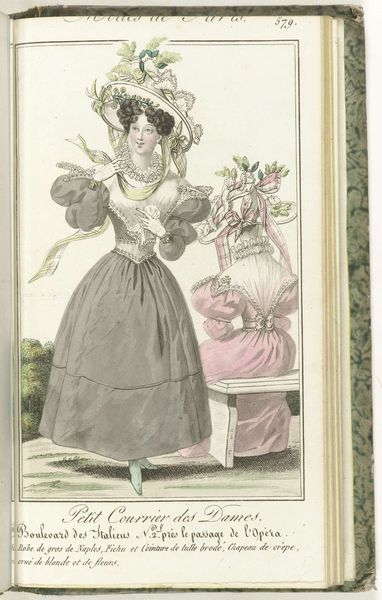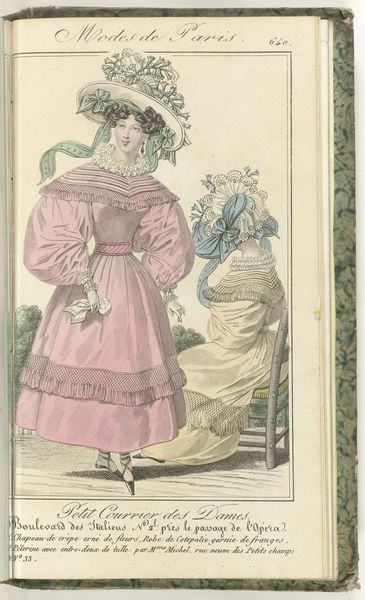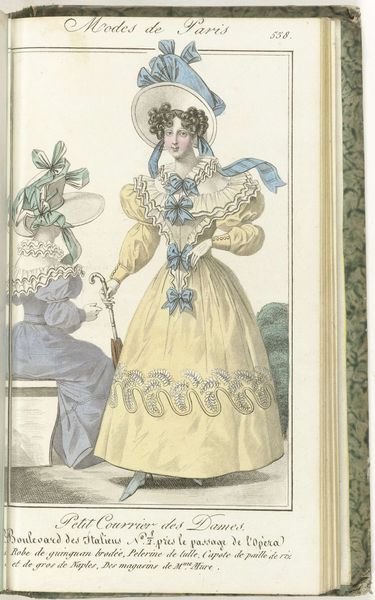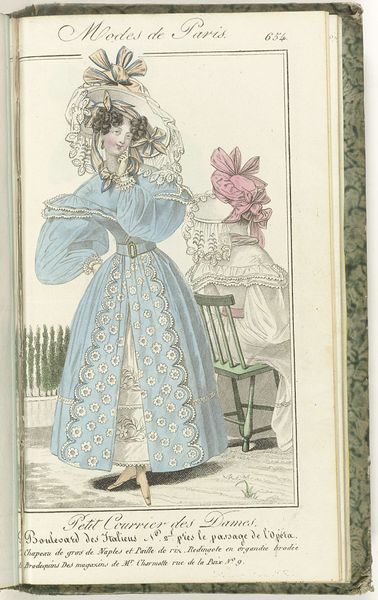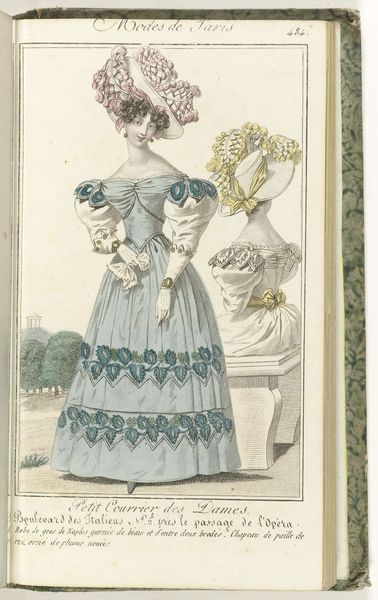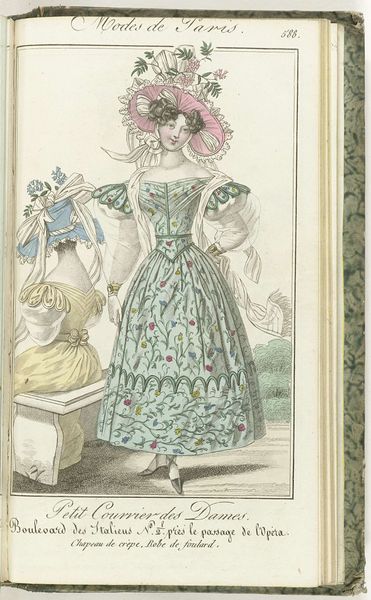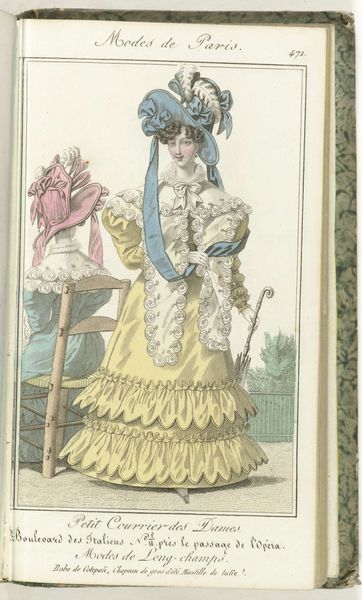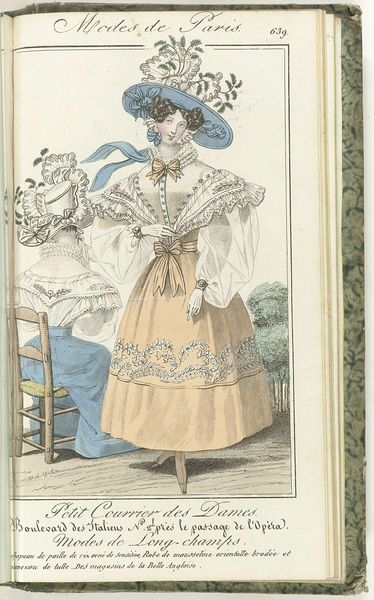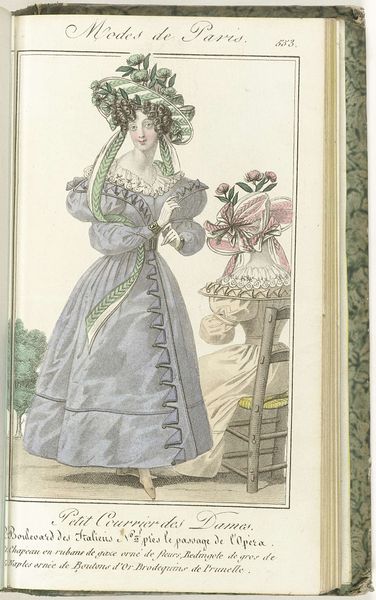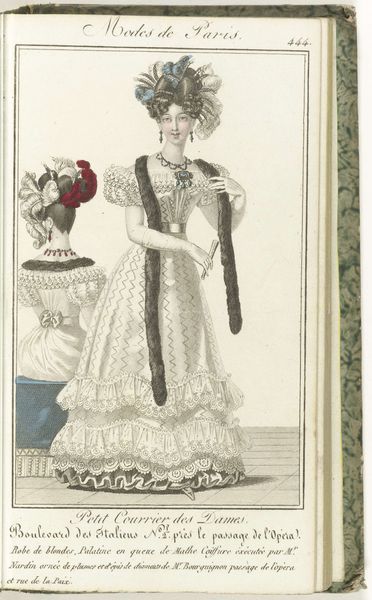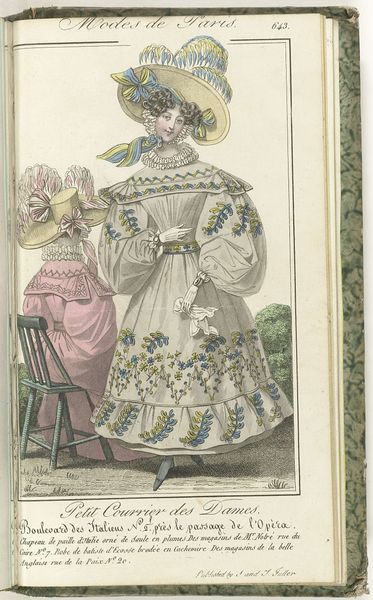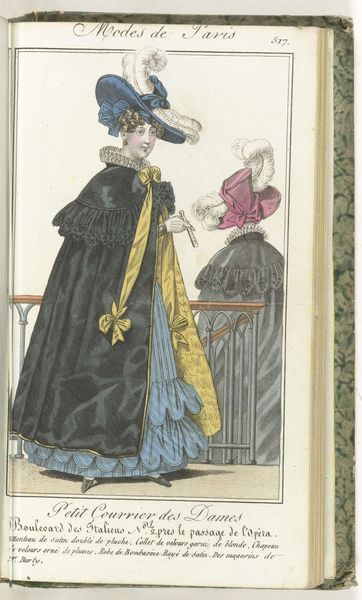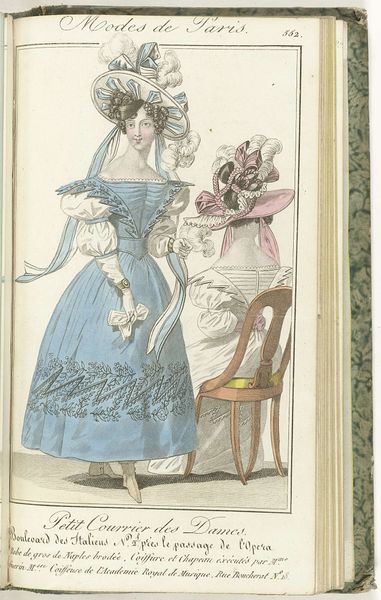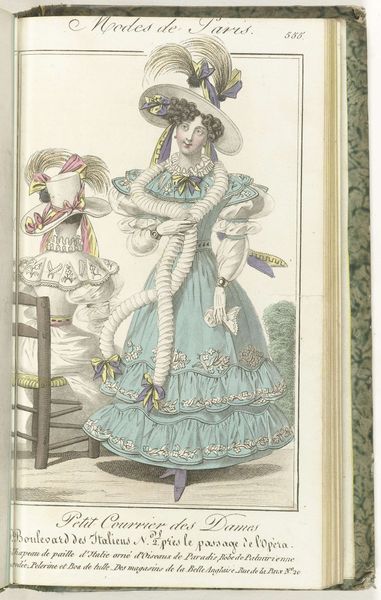
Petit Courrier des Dames, 20 juillet 1829, No. 653 : Chapeau de paille de riz... 1829
0:00
0:00
anonymous
Rijksmuseum
drawing, print, paper, watercolor, ink
#
drawing
# print
#
traditional media
#
figuration
#
paper
#
watercolor
#
ink
#
romanticism
#
sketchbook drawing
#
watercolour bleed
#
watercolour illustration
#
genre-painting
#
watercolor
Dimensions: height 201 mm, width 113 mm
Copyright: Rijks Museum: Open Domain
Curator: Here we have a fashion plate from 1829, entitled "Petit Courrier des Dames, 20 juillet 1829, No. 653 : Chapeau de paille de riz..." It’s currently held at the Rijksmuseum. Editor: What strikes me immediately is how ethereal she appears. The light pastel colors and delicate linework give her an almost dreamlike quality, a feminine ideal presented within a codified language of status. Curator: Absolutely. These fashion plates served a vital role. Consider this not merely as an image, but as a tool disseminating Parisian style, shaping the desires and social aspirations of women across Europe. This particular print employs watercolor and ink on paper. Editor: The hat, particularly. Look at how the ribbons and flowers are integrated; they are an aspirational representation, status symbols of romantic love and family life intertwined within the design itself. The extravagant sleeves, those romantic period lace details, would certainly create an allure! Curator: Precisely. Fashion was a visual signifier of class and cultural capital, the puffs of those sleeves as much of an overt signal of leisure and belonging. Note also how the text below positions it “Boulevard des Italiens…” associating the look with a chic urban lifestyle. The “magasins de M. Papant,” become centers, hubs in an emerging global marketplace of taste. Editor: I do wonder, though, about the practicality of it all. The hat seems utterly impractical for any real activity, purely ornamental. How much of what we perceive today as beautiful were originally conceived just as signs? The romantic idealism in that moment versus how different wearers throughout history perceived its impact, and if those cultural references changed in the wearer’s environment? It has staying power across a visual culture. Curator: That’s the power of fashion, isn't it? It straddles utility and fantasy. A means of self-expression inextricably linked with societal forces of economics and representation. These prints offer invaluable glimpses into the negotiations and struggles that shaped the early 19th century. Editor: It makes you wonder about all the lost signs we can't even recognize anymore when it comes to fashion history, codes that just seem pretty or bizarre, at a distance. But such rich histories for the beholder’s eye and social awareness.
Comments
No comments
Be the first to comment and join the conversation on the ultimate creative platform.
